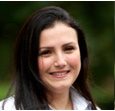Link to Pubmed [PMID] – 15217838
Blood 2004 Oct; 104(8): 2475-83
Signal transducer and activator of transcription 1 (STAT1), a transcription factor known to participate in antiviral responses, acts as a tumor suppressor inhibiting cell growth and promoting apoptosis. To study the role of STAT1 in DNA damage-induced apoptosis in B lymphocytes, its active form, STAT1alpha, was specifically inhibited by the overexpression of STAT1beta, the STAT1alpha truncated inhibitory isoform. An episomal vector with a tetracycline-inducible bidirectional promoter was created to induce the expression of 2 proteins, STAT1beta and enhanced green fluorescence protein (EGFP). The same vector was used to overexpress STAT1alpha as a control. Expression of STAT1beta inhibited the phosphorylation, the DNA-binding activity, and the transcriptional activity of STAT1alpha, as well as the expression of STAT1alpha target genes such as p21WAF1/CIP1, TAP1, IRF1, and PKR. Inhibiting STAT1alpha by STAT1beta increased the growth rate of transfected cells and their resistance to fludarabine-induced apoptosis and cell cycle arrest. Overexpressing STAT1beta reversed the negative regulation of Mdm2 expression observed after treatment with interferon-gamma (IFN-gamma), which activates STAT1, or with fludarabine. Nuclear translocation of p53 after fludarabine treatment was decreased when STAT1beta was overexpressed, and it was increased when STAT1alpha was induced. Oligonucleotide pull-down experiments showed a physical STAT1/p53 interaction. Our results show that imbalance between the antiproliferative/proapoptotic isoform STAT1alpha and the proliferative isoform STAT1beta is likely to play a crucial role in the regulation of proliferation and apoptosis and that STAT1alpha may regulate p53 activity and sensitize B cells to fludarabine-induced apoptosis.
